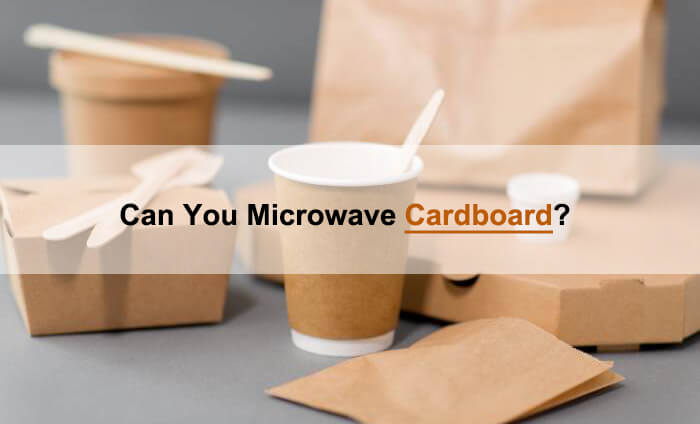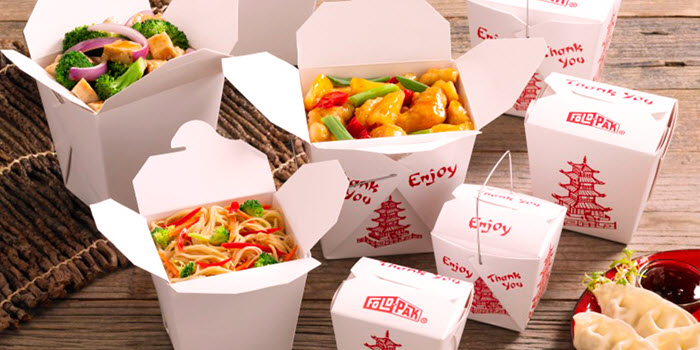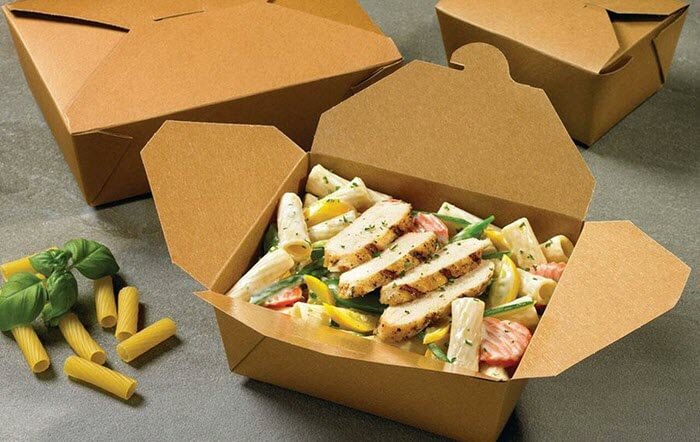Cardboard is often used in daily life for various reasons. We use it for carrying prepared and raw food in every store. We also prefer it as it is recyclable.
So, can you put cardboard in the microwave? After all, it is using waves of radiation to heat something. Cardboard is safe in the microwave because it is a natural material.
There are some exceptions to this, including coated cardboard and treated cardboard packaging. We’ll discuss all of this and the various aspects of cardboard so you can be at ease when reheating your favorite leftovers.
Table Of Contents
Microwaving and Reheating Cardboard
Microwaving pure cardboard can be tricky.
It is important that you do not microwave cardboard that has been treated with chemicals or waxes. This can contaminate food and drink and is not safe for human consumption.
That being said, if the container is only coated on the outside, the inner vessel made of pure cardboard, then you can reheat it slowly in your microwave. You want to do this on medium heat, never high.
Can you microwave cardboard?
Yes, you can microwave pure cardboard. Pure cardboard [1] has a moisture level of about 10 percent, which allows you to microwave the material in intervals on medium.
Without going past two minutes, you can slowly heat the contents of your cardboard container in 30-second intervals. Make sure to check the container every 30 seconds and stir the contents.
If it is a liquid you are trying to reheat in cardboard, you’ll want to microwave it in smaller intervals, every 20 seconds on medium heat. Again, never use high or maximum heat as it can set the pure cardboard on fire.
Is Cardboard Microwave Safe?
The fibrous materials in pure cardboard are harmless. It is not toxic to ingest and will not leak any toxins, chemicals, or natural flavorings into your food and drink.
However, if you microwave liquid or food high in a cardboard container, it can catch on fire and you will get ash and possibly scorched food.
You should always pay attention to labels on boxes and containers [2]. Cardboard is generally safe but the packaging will have a microwave-safe label on it. If it does not, consider switching to a different bowl or vessel.
If you are lucky, you will have takeout experts at your restaurant of choice with detailed reheating and microwaving instructions. This has become more common on apps like Uber Eats, Glovo, and Doordash.
What about cardboard takeout boxes?
Takeout boxes can be tricky. As we said, apps that deliver food in the United States will almost always use some sort of aluminum or plastic packaging. That or they will use the wildly popular treated or waxed cardboard.
This is not safe to microwave at all [3]. Metal will combust instantly and cause the mechanics and electronics in your microwave to short. You may even have a fire on your hands so never put metal in the microwave.
This also applies to cardboard takeout boxes that are treated and have little metal handles for easy packing and unpacking. These are not safe to microwave in and we do not recommend their foam counterparts.
Foam and cheap plastics will instantly melt in a microwave so it is only safe to use pure cardboard or a durable microwave-safe container like ceramic or various glass pieces.
Can You Microwave Wax and Waterproofing Cardboard?
As mentioned, waxed and treated cardboard is never safe in the microwave. Even if it is only on the outside of the container, it is not recommended to microwave such materials.
Chemical vapors or leaking into the fibrous pure cardboard could be toxic. The same goes for wax-treated cardboard. Most likely, it will melt into your food or drink and cause digestion problems.
Ingesting wax is never a good idea, and we don’t recommend microwaving either form of treated or impure cardboard.
Bonus: Things About Cardboard You Should Know
What Is Cardboard?
Cardboard is considered pure when it uses only plant fibers or cellulose materials. This kind of cardboard is combustible and is pressed with a certain percentage of moisture to keep its shape.
Cardboard is a heavy-duty paper product which when untreated with chemical sprays, is recyclable. It may sometimes be treated with wax, in which case you will want to avoid reheating cardboard in the microwave.
Cardboard is often used in packaging, but it can also be used in the form of corrugated fiberboard, a thicker construction material. The fibrous material cardboard is made from plants such as hemp, various tree species, and various grass species found around the world.
It can combust when the moisture in it becomes so low that the natural fibers catch fire at a molecular level. You want to avoid this in microwaving and reheating pure cardboard containers.
First Uses of Cardboard
Cardboard was first made in a primitive form over two thousand years ago by eastern civilizations along the Yellow River. The first to discover paper and its fibrous uses for packaging, the concept quickly spread to the middle east and Africa.
Parchment, which was easier and quicker to make than vellum, was the main focus of many for this fibrous pressed material in Europe. However, during the industrial revolution of the nineteenth century, cardboard and parchment became the ideal packaging medium.
Not only for gifts during holidays and birthdays but for food such as the corner bakeries, butchers, and herbalists. Soon, paper and cardboard boxes holding the grand hats and dresses of the romantic era were decorated in wax and colored cardboard boxes.
Even now, this tradition continues when we go shopping at high-end boutiques and stores. The bag of choice is sturdy and made of paper and cardboard with a bright logo or brand name adorned in gold or bevel.
Final Words
Asking if you can put cardboard in the microwave is a smart question as most people assume all cardboard is safe.
That isn’t the case, and you should always be cautious when microwaving and reheating any vessel or dish. We hope you are more at ease about cardboard and ready to apply this knowledge in your everyday life.
Related Post




